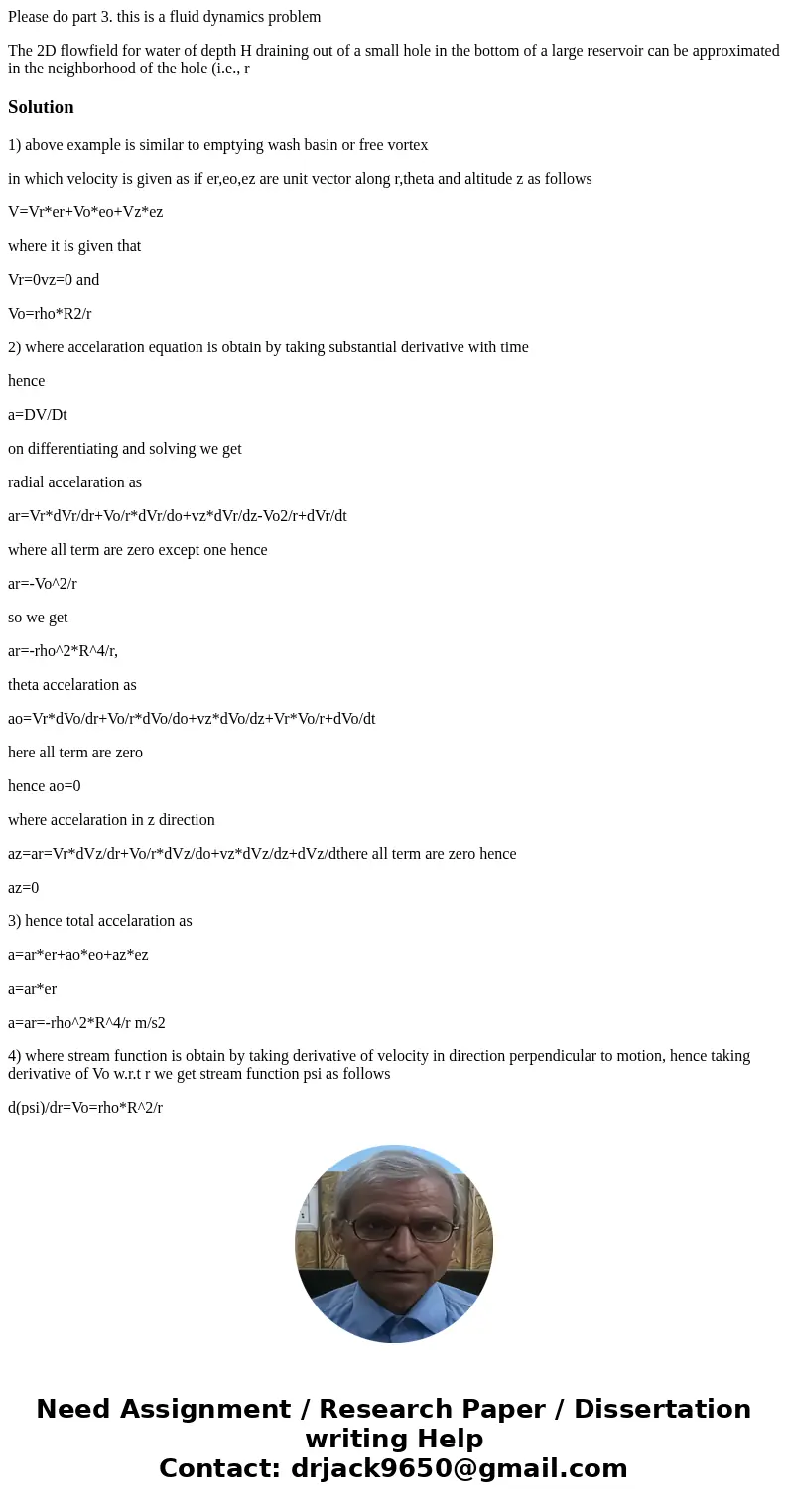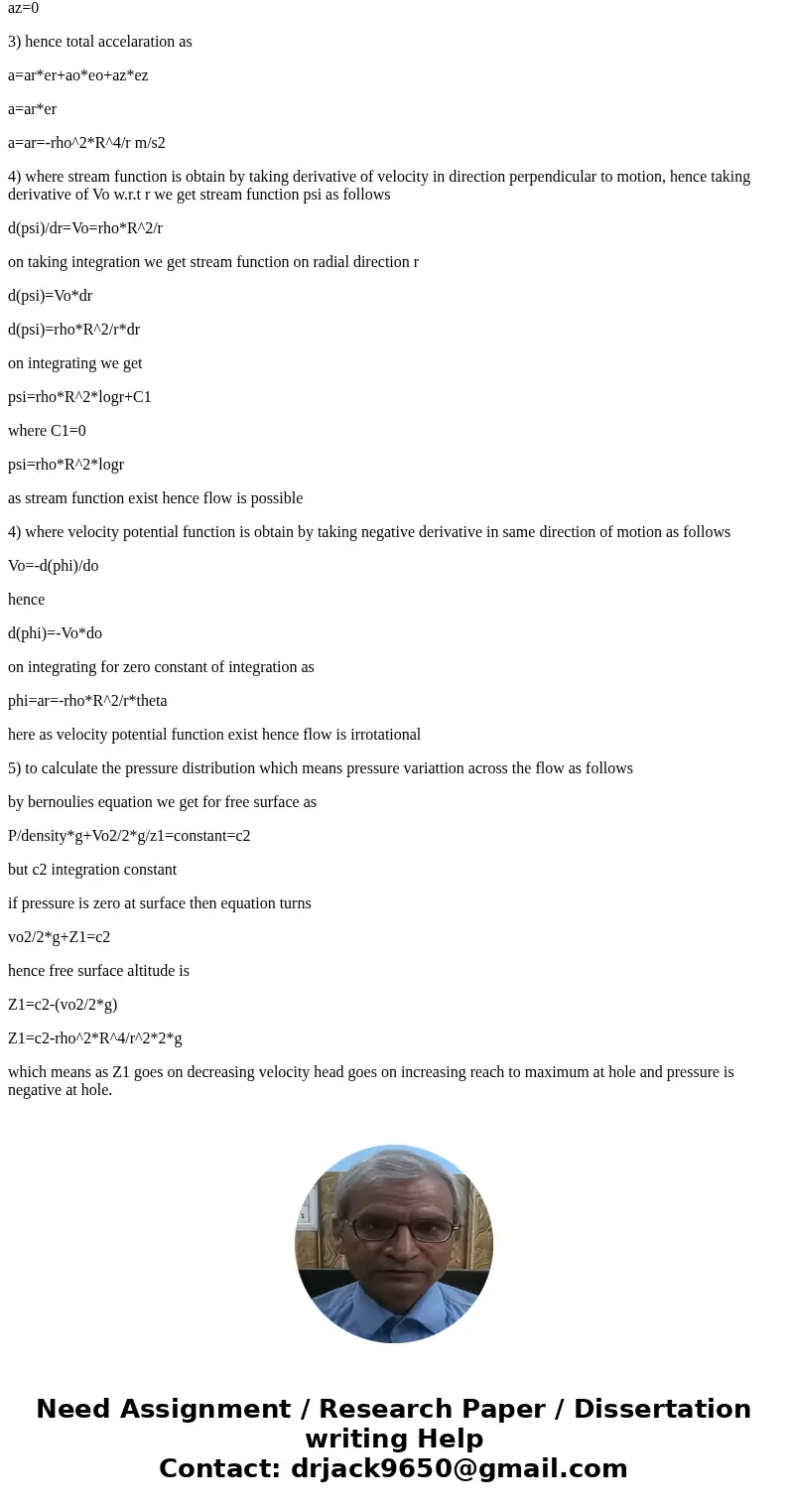Please do part 3 this is a fluid dynamics problem The 2D flo
Please do part 3. this is a fluid dynamics problem
The 2D flowfield for water of depth H draining out of a small hole in the bottom of a large reservoir can be approximated in the neighborhood of the hole (i.e., rSolution
1) above example is similar to emptying wash basin or free vortex
in which velocity is given as if er,eo,ez are unit vector along r,theta and altitude z as follows
V=Vr*er+Vo*eo+Vz*ez
where it is given that
Vr=0vz=0 and
Vo=rho*R2/r
2) where accelaration equation is obtain by taking substantial derivative with time
hence
a=DV/Dt
on differentiating and solving we get
radial accelaration as
ar=Vr*dVr/dr+Vo/r*dVr/do+vz*dVr/dz-Vo2/r+dVr/dt
where all term are zero except one hence
ar=-Vo^2/r
so we get
ar=-rho^2*R^4/r,
theta accelaration as
ao=Vr*dVo/dr+Vo/r*dVo/do+vz*dVo/dz+Vr*Vo/r+dVo/dt
here all term are zero
hence ao=0
where accelaration in z direction
az=ar=Vr*dVz/dr+Vo/r*dVz/do+vz*dVz/dz+dVz/dthere all term are zero hence
az=0
3) hence total accelaration as
a=ar*er+ao*eo+az*ez
a=ar*er
a=ar=-rho^2*R^4/r m/s2
4) where stream function is obtain by taking derivative of velocity in direction perpendicular to motion, hence taking derivative of Vo w.r.t r we get stream function psi as follows
d(psi)/dr=Vo=rho*R^2/r
on taking integration we get stream function on radial direction r
d(psi)=Vo*dr
d(psi)=rho*R^2/r*dr
on integrating we get
psi=rho*R^2*logr+C1
where C1=0
psi=rho*R^2*logr
as stream function exist hence flow is possible
4) where velocity potential function is obtain by taking negative derivative in same direction of motion as follows
Vo=-d(phi)/do
hence
d(phi)=-Vo*do
on integrating for zero constant of integration as
phi=ar=-rho*R^2/r*theta
here as velocity potential function exist hence flow is irrotational
5) to calculate the pressure distribution which means pressure variattion across the flow as follows
by bernoulies equation we get for free surface as
P/density*g+Vo2/2*g/z1=constant=c2
but c2 integration constant
if pressure is zero at surface then equation turns
vo2/2*g+Z1=c2
hence free surface altitude is
Z1=c2-(vo2/2*g)
Z1=c2-rho^2*R^4/r^2*2*g
which means as Z1 goes on decreasing velocity head goes on increasing reach to maximum at hole and pressure is negative at hole.


 Homework Sourse
Homework Sourse